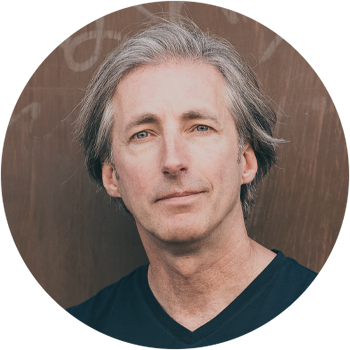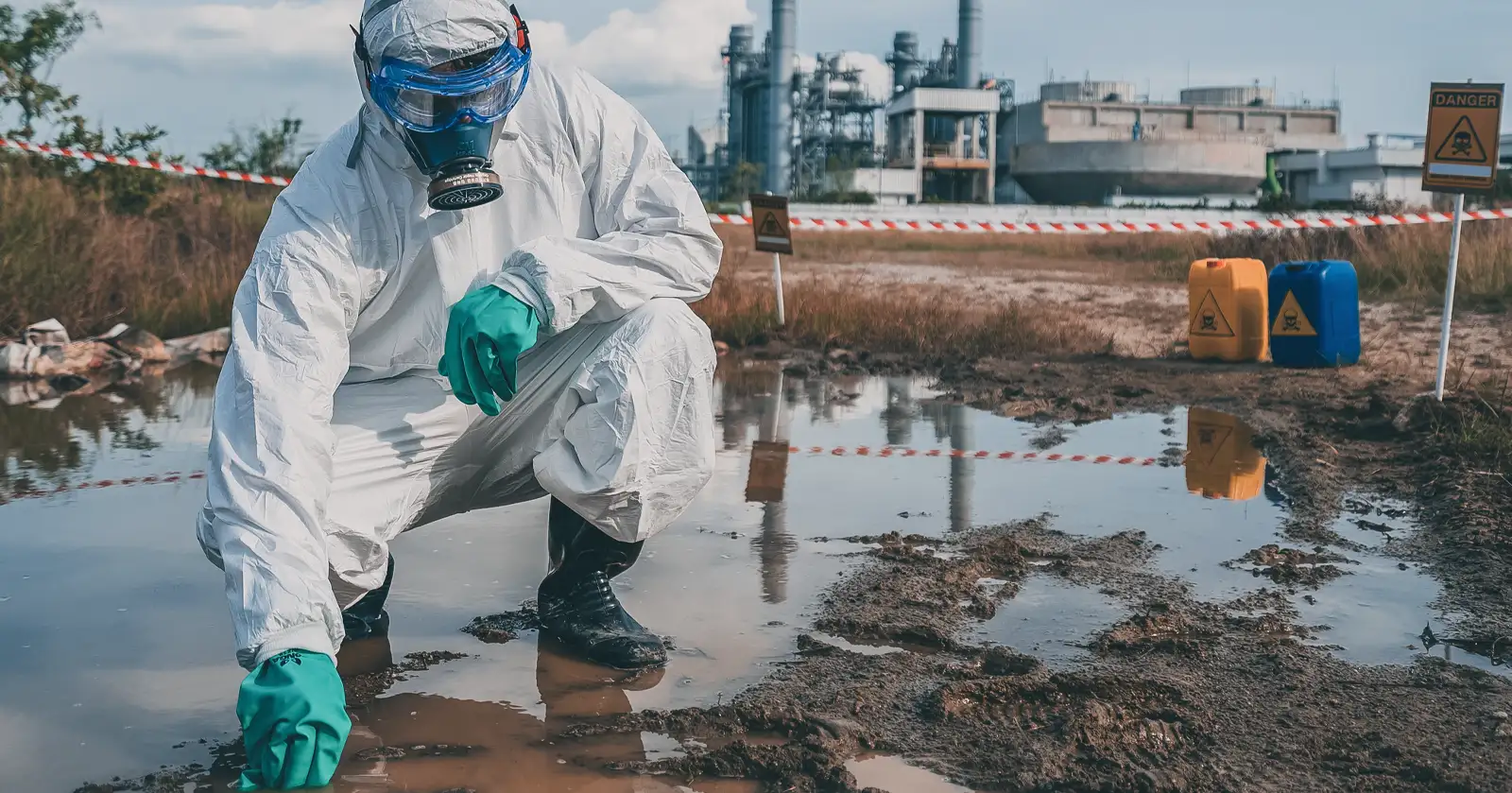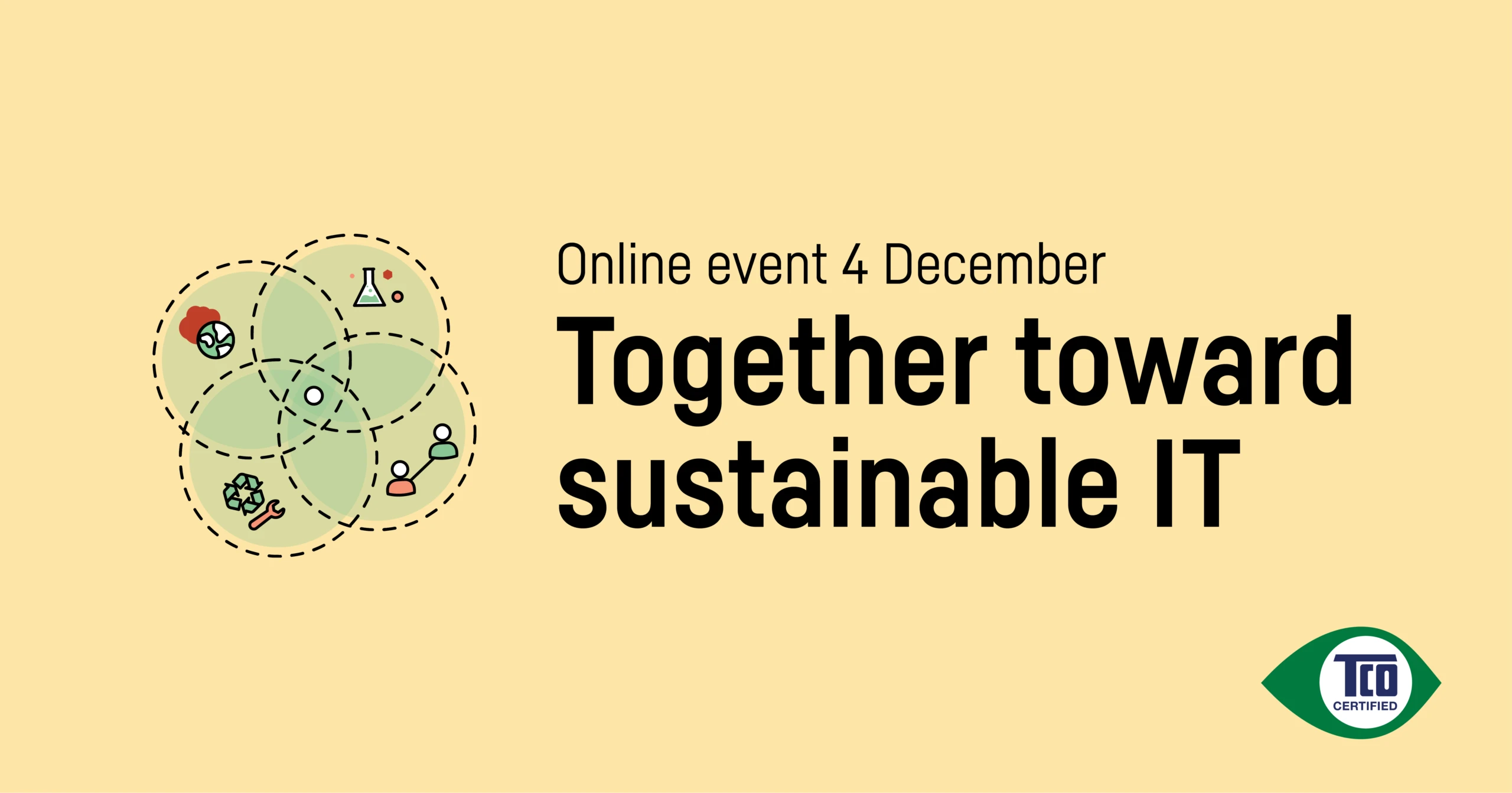By doing the opposite of everyone else, we managed to develop a powerful tool for chemical safety. This is the story of how we accomplished what seemed almost impossible at first — to regulate which substances are used in the products we certify.
The chemical industry is known for being secretive and difficult to control. To reduce the risks to human health and the environment, TCO Certified enforces transparency and identifies safer substances to be used in certified products. Stephen Fuller, a chemical expert at TCO Development, explains why pointing out the positives is much more impactful than banning substances known to be harmful.

“If we are to move toward a sustainable life cycle for IT products, we need to know what they contain. However, this is not an easy task. More than 350,000 chemical substances are available on the market, and most are untested which means that we have no idea of their risk level. The number of new chemicals grows fast with around 25,000 additions each year.
“To address this enormous challenge, we incorporated hazardous substances criteria into TCO Certified back in 1995. At first, we had the same approach as everyone else and focused on banning substances that were proven to be hazardous, starting with lead, cadmium, mercury, and then specific types of halogens. We realized though that this strategy was ineffective — the number of tested substances was overshadowed by untested ones, so by doing this, we would only really be able to touch the tip of the iceberg. Also, the risk was high that a restricted substance would be replaced with one that is just as bad or even worse. We couldn’t rely on legislation — it lags far behind and restrictions are often regional. To get on top of the situation, we made a decision: to consider all non-assessed substances a high risk until proven to be otherwise. As a result, TCO Certified Accepted Substance List was formed in 2015.”
A powerful tool for chemical safety
“With TCO Certified Accepted Substance List, information about each substance is collected, including both public information and confidential information from the chemical manufacturer. An independent toxicologist uses the information to assess the potential effect the substance may have on human health and the environment. If the substance is proven to be a safer choice after a thorough assessment, it is added to TCO Certified Accepted Substance List and can be used in certified products. The list is dynamic, and substances may be reassessed based on new scientific findings.
“All non-assessed substances are seen as high-risk until proven to be otherwise”
With TCO Certified Accepted Substance List, chemical suppliers are required to share the information they have. Failing to do so leads to a business disadvantage when the chemical is excluded from TCO Certified Accepted Substance List and cannot be used in certified products. With this approach, our idea is to incentivize transparency by connecting information sharing with business opportunity.
“The difference is huge. Now, for the first time, it doesn’t matter how many chemicals or chemical mixtures the industry creates. Unless they are tested by independent toxicologists and proven to be a safer option, they cannot be used. We have accomplished what seemed almost impossible at first — to regulate which substances are used in the products we certify.”
Transparency becomes a business advantage
“To begin with, our push for greater transparency was a somewhat confronting challenge. We met resistance from chemical companies that were unwilling to share information about the ingredients and hazard levels of their products. However, the situation changed when brand owners in the IT industry recognized the benefits of having a shared list of safer choices that would enable them to make informed decisions about which ones to use. By opting for safer substances, IT brands could minimize the risk of costly product recalls or the hassle of switching to alternative chemical suppliers if certain substances became restricted by legislation. The positive list strategy was also welcomed by IT purchasers as it helped them make safer choices. This put pressure on the chemical industry to share the information they until then treated as confidential. Failing to do so would lead to a business disadvantage when the chemical is excluded from TCO Certified Accepted Substance List and cannot be used in certified products.
“The positive list strategy was also welcomed by IT purchasers as it helped them make safer choices“
“Now everyone can see that it is possible to turn the table on the standard way that businesses and governments handle chemicals. With TCO Certified Accepted Substance List, we can finally control harmful substances in an effective way, and perhaps even more importantly, point towards safer alternatives that should be used as substitutes. TCO Certified Accepted Substance List is our contribution to both industry and society at large, as the list is public and available to everyone, regardless of industry or product area.”
Only safer options can be used
“Flame retardants was the first category of substances included on TCO Certified Accepted Substance List. Over the years we’ve identified 87 flame retardants still being used for IT products, of which 34 have been assessed and proven to be safer alternatives. 25 of these have been added to TCO Certified Accepted Substance List as viable safer alternatives for certified products. Of the remaining substances, 21 are known to be highly hazardous and should be avoided, and 32 have no public record of a hazard assessment so the hazard level is unknown.
“In 2018, the list was expanded to cover plasticizers that are added to plastics to make them flexible. It was much easier this time around since many already understood the benefit of transparency and a shared list. The reason for including plasticizers was that four substances had been added to RoHS for complete restriction, and we had identified that the replacement substances would be regrettable ones. So the list of plasticizers was developed to prevent this and show the brands what they should use instead.
“In 2021, process chemicals became the latest addition to TCO Certified Accepted Substance List. Three years of extensive research on chemical risks for factory workers, and collaboration in the multi-stakeholder program Clean Electronics Production Network, had made it clear that whilst safer alternatives were available and viable, cancerogenic chemicals such as benzene, n-hexane and methanol were being used. These examples have strict restrictions in Europe, but we found were still in use in factories in China where most of the IT production takes place. However, even in Europe, it is still possible to use potentially equally hazardous chemicals. To protect the health and well-being of workers wherever the production is situated, we decided to only allow safer process chemicals on the production lines of certified products.
Research for the next step
“We have completed research on chemical additives to power and signal cables. Once again the results show that hazardous substances that should be restricted are being used, and that the majority are unassessed for their impact. In our research, we identified 20 flame retardant additives being used in power cables. Eight of these have been tested and are known to be safer alternatives. Seven of them are listed on TCO Certified Accepted Substance List. Nine are tested and defined as chemicals of high concern that should be avoided. The rest are of unknown hazard. Chemical stabilizers, that are added to plastics to prevent degradation of the material, also proved to be a hazard since lead-based stabilizers were still being used. This category of chemicals has now been added to TCO Certified Accepted Substance List and presently, we have eight safer alternatives listed.
“Our work with cables shows us that even though we list viable safer alternatives on TCO Certified Accepted Substance List, many IT manufacturers will continue to use regrettable alternatives unless required to do otherwise. To speed up the transition to phasing out hazardous substances from all cables delivered with the product, we must mandate manufacturers to use only safer alternative additives. The likely reason for the continued use of certain hazardous alternatives is that they have become the easy alternative proven for electrical safety requirements everywhere. However, this doesn’t mean they are the only viable alternative.”
The history of safer substances in TCO Certified
- 1995: The first hazardous substances criteria were formed, focusing on banning lead, cadmium and mercury.
- 1998-2014: We attempted to drive chemical safety through restriction, but since most substances are unassessed with an unknown level of risk, this proved to be an ineffective strategy.
- 2015: The first version of TCO Certified Accepted Substance List was released, focusing on flame retardants.
- 2018: Plasticizers were added as a new category on TCO Certified Accepted Substance List.
- 2021: To protect the health and safety of workers, our ground-breaking system for safer substances was expanded to also cover process chemicals.
- 2023: We conduct research ahead of the next step in safer substances.




